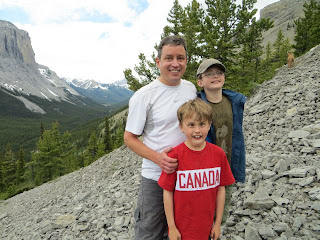Last week my seven-year-old announced he was going mining in the backyard. A couple minutes later I heard what sounded like a hammer on rock. Sure enough, he'd discovered that sandstone breaks really, really easily. My first thought was, "Those sandstone rocks were hard to find..." Then he held up a piece that had been stained red and asked, "What's this dark spot?"
That triggered a discussion of how the sandstone had iron in it and the red was rust (I held it next to the rusting grill on my fire pit so he could see they were the same color), why you can't see the iron, how they get little bits of iron out of rocks, how they get the rocks, what the hole looks like after they've gotten all the rocks they want and so on.
When we were done, he looked me straight in the eye and said, "You knew there was iron in your rocks all this time and you didn't tell me? Don't you know I mine for iron in Minecraft!?"
Minecraft is an online game he and his brother play where you build your own sort of world out of stuff that you find, mine or otherwise accumulate. I learned two things from this:
- 1. A few rocks in a garden can be a natural play area. (He also
discovered that there are bugs under the rocks, so the ones he didn't
break into smaller rocks were turned over onto the flowers beside them
to see what was there.)
- 2. Computer games, in moderation and of the non-Grand Theft Auto
variety, maybe aren't entirely evil. If I take a more active interest
in
them than just censoring and banning the inappropriate ones, maybe I
can use them to engage my boys in the real world.










